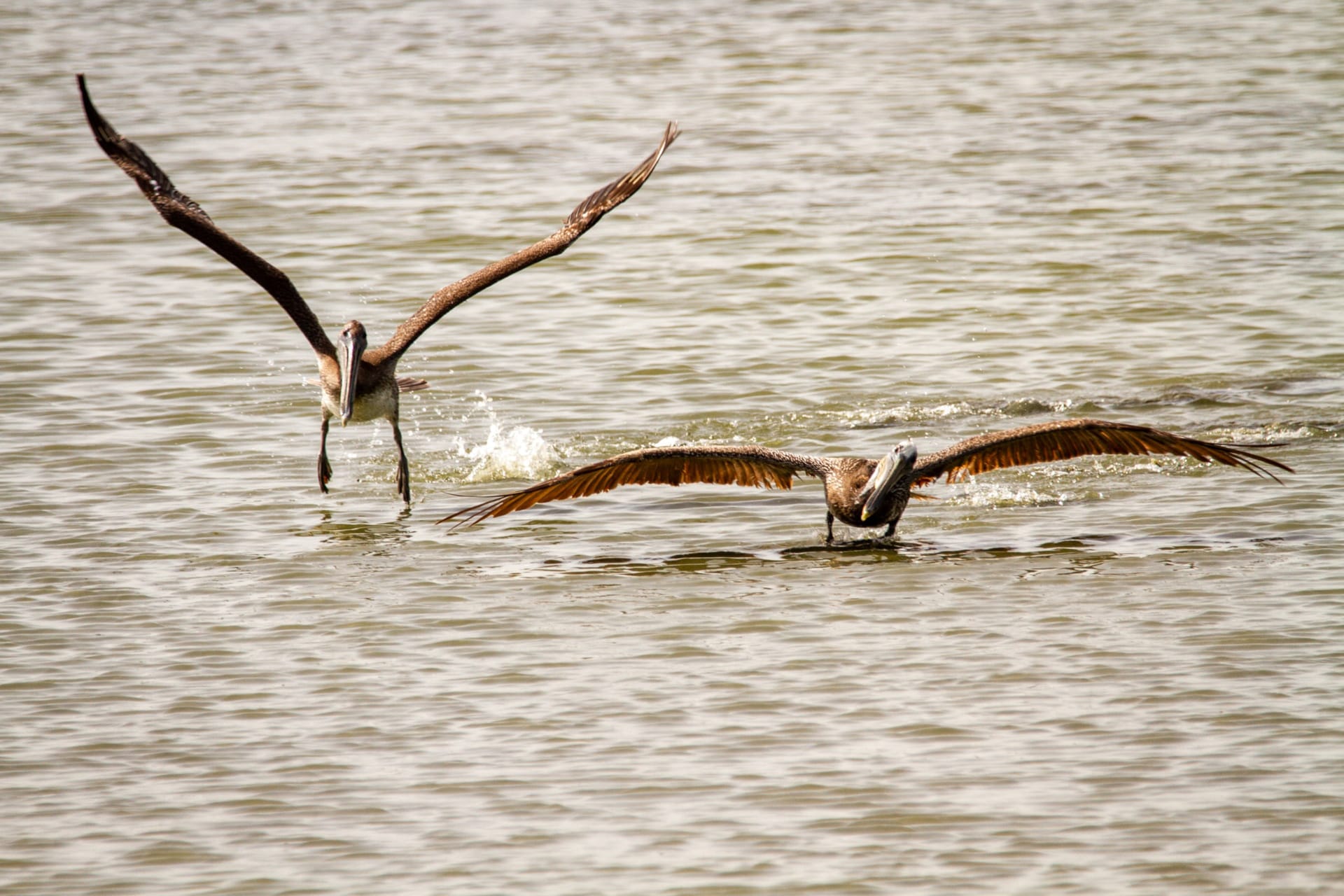Blue ocean strategy in the food and beverage industry
Business development • Have you heard of Blue Ocean Strategy? A business strategy that is applicable in all industries at all times. The success stories are many for companies that have succeeded in creating new value offerings and new markets. But has the strategy made an impact in the food industry?
Blue Ocean Strategy is a business strategy that involves doing something contradictory; namely to cut costs and at the same time offer the consumer something new and exciting. How is that possible? In the 1980s, the circus Cirque du Soleil showed the world how to do it. But what about the food industry – can Blue Ocean Strategy make a difference there too?
What is Blue Ocean Strategy?
W. Chan Kim and Renee Mauborgne are the authors behind the Blue Ocean Strategy. It is not a strategy that they themselves came up with out of nothing, but rather a compilation of data where the authors have drawn conclusions and based on that created the Blue Ocean Strategy.
They have examined 150 companies in 30 different industries, by looking at data that stretches 100 years back in time.
The basic assumption is that most companies are located in the red ocean. There, the companies’ business model and product offering are almost identical. The competition is murderous and the goal is to gain as much market share as possible; either by being the cheapest – or trying to differentiate and offer something that competitors don’t offer, but at a higher price.
In the blue ocean, we find companies that have managed to get from the red ocean to the blue ocean, by creating a new value proposition – that is, offering something new that creates value for customers – but without raising costs. In this way, companies in the blue ocean can create completely new markets with non-existent or minimal competition.
The Blue Ocean Strategy includes several different models and tools. One of the most basic is the four action framework. Let’s take a closer look at it!

The Four action framework
With the help of the four action framework, you can find out which factors you should reduce and which you should increase to potentially get from the red ocean to the blue ocean. The four action framework helps you to figure out how to reduce costs but at the same time offer the customer something new and attractive that has not previously existed.
The tool includes four parts with each question. The parts are: reduce, eliminate, increase, and create. Let’s go through them!
Reduce: Which factors should be reduced below industry standards?
These factors may include products or services that you have invested heavily in to cope with the competition. The problem is that these investments can create high costs that do not provide much value in return.
Eliminate: Which factors that the industry has long competed on should be eliminated?
This is the factors that a company may have invested heavily in but doesn’t increase competitiveness and provide little or no return at all. These may be investments that have previously been important but have lost their relevance over time.
Increase: Which factors should be raised above the industry standard?
This is the factors that create value for customers, but thus far been ignored by the industry.
Create: Which factors should be created that the industry has never offered?
This is the factors that need to be discovered to create new value for customers.
Strategic tools can easily become abstract and difficult to understand. Let’s put the four action framework in context by looking at an example from reality.
Historical examples
One of the most well-known examples of Blue Ocean Strategy is found in the entertainment industry.
The traditional circus industry had a hard time in the ‘80s. New popular amusements sprang up, including video and computer games, and people also began to question the use of wild animals. Revenues began to decline at the same time as the costs of running a circus were high. As if that was not enough, the ticket prices were fairly cheap, which created bad margins.
Out of these conditions, Cirque du Soleil was born. The animals were eliminated but they kept the supporting elements of the circus: the clown, the acrobatics and the tent. But at the same time, they created something new; the clown did not become as silly, the acrobats got artistry and the tent was made more luxurious and cosier.
They took inspiration from the theatre world and Broadway. Instead of doing the same number over and over again, year after year, with only minor changes, they wrote a story and made different sets. Simply put, they increased the quality of the shows.
Cirque du Soleil created a new value proposition – a sophisticated mix of circus, theatre and dance – which attracted people who usually go to opera, theatre and ballet. This meant that ticket prices could be raised quite dramatically. At the same time, they avoided high costs by not having any animals.
Now you may be wondering what it looks like in the food industry. What examples can we find there?

Ful Foods
The coming decades will be about sustainability and environmental work, which in turn will affect how we eat and drink. This is something that the company Ful Foods has taken note of. Ful Foods is a startup that has started making beverages but not just any beverages.
In the Ful Foods product range, we find sugar-free products, without additives and with a low-calorie content. But is it enough to be called innovative in 2020?
No, what really sets Ful Foods apart from others is the use of the sea pantry; in their beverages we find microalgae.
Foods with algae are anything but a gimmick. According to Ful Foods, microalgae have several important benefits. They produce more than half of the oxygen we breathe and are better than trees at capturing carbon dioxide. Nor is any arable land required to grow the nutrient-rich microalgae that are rich in protein and vitamins.
Kind to the planet and the people
In Ful Foods drinks, we get a beverage with few calories, low climate impact, no added sugar, but which also promotes health by actively adding protein and vitamins. In summary, by using microalgae, Ful Foods has created a product that is kind to both the planet and humans.
Listen to the founders of Ful Foods and what they have to say about their product and Blue Ocean Strategy.
Insects in food
In the same way that Ful Foods uses microalgae, you can use insects. Insects are packed with protein and vitamins, are inexpensive to breed and have minimal climate impact.
But even if there are good reasons to start partying on mealworm beetles and grasshoppers, it is downright disgusting for many people.
But what happens if you make protein powder from insects, or create power bars from the powder – and also add other useful ingredients such as sunflower seeds and pea protein and sweetness from steviol glycosides?
That’s exactly what the German company Isaac Nutrition is doing. By filling conventional products with innovative ingredients that are good for humans as well as the planet, Isaac Nutrition creates a new value proposition.
Finally
Finally, successful companies in the blue ocean will be joined by other companies and the value proposition will become mainstream. If companies like Ful Foods and Isaac Nutrition are successful, more companies will try their luck doing beverages with algae or protein bars on insects.
Blue Ocean Strategy does not promise endless happiness and prosperity. There is however long-term value in being a pioneer and actively working with value propositions and conveying it in marketing activities.
Read more!
If you want to learn more about Blue Ocean Strategy, you can do so at www.blueoceanstrategy.com which is the strategy’s official website.
If you want to read more about business development in the food industry, we have many thought-provoking articles on Bayn Magazine – everything from why you should reduce sugar by stealth to what is important for the new generation of consumers and much more.
Please, share this article if you liked it.
[et_social_share]





